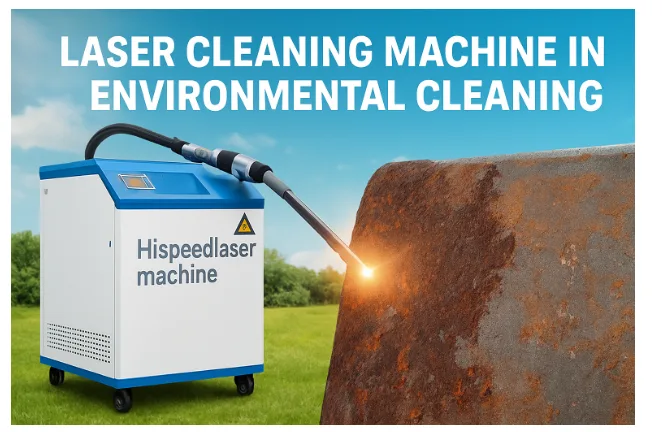Top 10 Reasons Why Laser Cleaning Machine is Revolutionizing Environmental Cleaning

Laser Cleaning Machine in Environmental Cleaning
A Laser Cleaning Machine in environmental cleaning represents one of the most transformative advancements in sustainable surface treatment. Unlike traditional cleaning processes that rely on harsh chemicals, abrasives, or solvents, laser cleaning offers a contactless, precise, and residue-free method to remove contaminants, rust, paint, or oxides from various surfaces.
Its adoption is rapidly increasing in industries aiming to reduce environmental footprints while maintaining high productivity standards. When implemented strategically, these machines can replace pollutant-heavy techniques, making laser cleaning an essential tool for eco-friendly industrial cleaning and maintenance.
How Laser Cleaning Machines Work
Laser cleaning technology relies on a process called laser ablation, where focused laser beams remove contaminants through rapid localized heating. This causes unwanted materials—like rust, oil, or paint—to vaporize or peel off without damaging the underlying substrate.
The brilliance of this process lies in its precision and control. The laser beam intensity, frequency, and duration are adjusted depending on the type of surface and contamination. The result is a non-contact cleaning method that minimizes energy waste, eliminates secondary pollutants, and enhances environmental protection.
Modern machines, like the Hispeedlaser machine, leverage fiber laser technology, ensuring maximum efficiency, low energy consumption, and exceptional cleaning results.
Environmental Impact of Traditional Cleaning Methods
Before the emergence of laser cleaning, industries depended on chemical solvents, sandblasting, or abrasive cleaning techniques. While effective, these methods produce toxic waste, emit volatile organic compounds (VOCs), and generate airborne dust that harms both workers and the environment.
Additionally, chemical waste disposal remains a significant challenge, contributing to soil and water contamination. In contrast, laser cleaning stands out as a zero-emission, zero-chemical solution, aligning perfectly with global green initiatives and sustainability standards.
Why Laser Cleaning Machines are Eco-Friendly
The eco-friendly benefits of laser cleaning machines stem from several key factors:
- No Chemicals: The process requires no detergents or solvents.
- No Secondary Waste: No sand, grit, or liquid residues.
- Energy Efficiency: Consumes significantly less power compared to mechanical cleaning.
- Worker Safety: Reduces exposure to toxic substances.
- Sustainability: Recyclable components and long operational lifespan.
When integrated into environmental cleaning systems, laser technology minimizes industrial pollution while enhancing process efficiency.
Hispeedlaser Machine: A Pioneer in Eco-Friendly Laser Solutions
When it comes to sustainable cleaning innovation, the Hispeedlaser machine stands out as a leader. Designed with advanced fiber laser technology, Hispeedlaser machines deliver precision cleaning with minimal environmental impact.
Their equipment supports multiple industries—automotive, aerospace, shipbuilding, and heritage restoration—by replacing polluting methods with efficient laser cleaning systems. Moreover, their machines are built for energy efficiency, low maintenance, and long-term sustainability, making them ideal for organizations pursuing green goals.
By choosing Hispeedlaser, companies can reduce carbon emissions, improve worker safety, and enhance operational efficiency—all while contributing to global sustainability efforts.
Advantages of Using Laser Cleaning Machine in Environmental Cleaning
Here are the top environmental advantages of using laser cleaning:
- Eliminates hazardous waste
- Minimizes water and energy consumption
- Enhances surface quality without damage
- Supports clean production and zero-emission policies
- Reduces overall operational costs
These benefits make laser cleaning a cornerstone of modern environmental cleaning strategies, bridging innovation and ecology.
Frequently Asked Questions
What makes laser cleaning better for the environment?
Laser cleaning produces no secondary waste or chemical pollutants, making it a cleaner and safer alternative to traditional methods.
Can laser cleaning be used in industrial waste reduction?
Yes. It removes contaminants efficiently, minimizing waste generation and promoting material recycling.
Is laser cleaning safe for workers?
Absolutely. The process is non-contact and chemical-free, reducing exposure to toxic substances.
What industries benefit most from laser cleaning?
Aerospace, automotive, manufacturing, and heritage restoration industries benefit significantly from this eco-friendly technology.
How does Hispeedlaser support environmental initiatives?
Hispeedlaser designs machines that optimize power efficiency, minimize emissions, and align with global sustainability goals.
Does laser cleaning reduce operational costs?
Yes, by eliminating the need for consumables and reducing maintenance, laser cleaning offers long-term cost savings.
Conclusion
The Laser Cleaning Machine in environmental cleaning represents a pivotal shift toward sustainability, innovation, and efficiency. With global industries striving for greener operations, laser cleaning technologies especially those from Hispeedlaser offer a future-proof solution that combines eco-consciousness with industrial performance.
By replacing outdated, pollutant-heavy cleaning methods, laser systems not only protect the environment but also enhance productivity and compliance with green standards. It’s time to embrace laser cleaning as the foundation of sustainable surface maintenance and industrial evolution.
